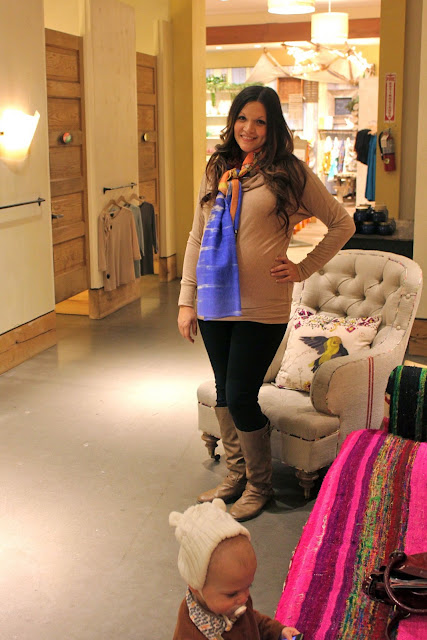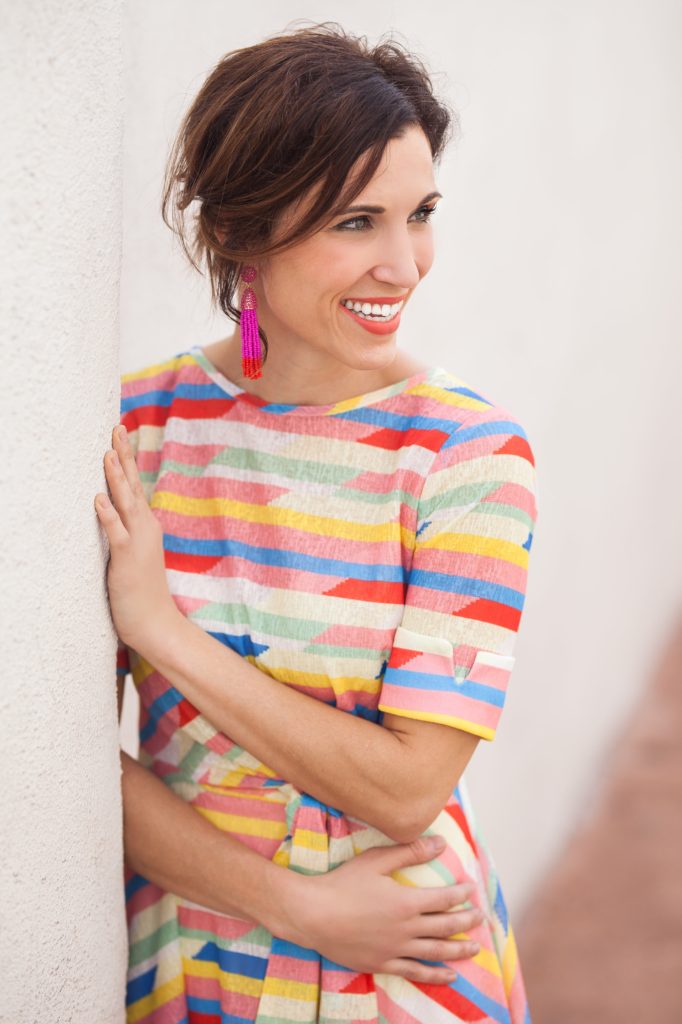
There’s something in your closet that you bought in the wrong size. You didn’t gain weight; you didn’t shrink. It just doesn’t fit, because you didn’t know what to look for. Just because an item of clothing zips or buttons, doesn’t mean it fits.
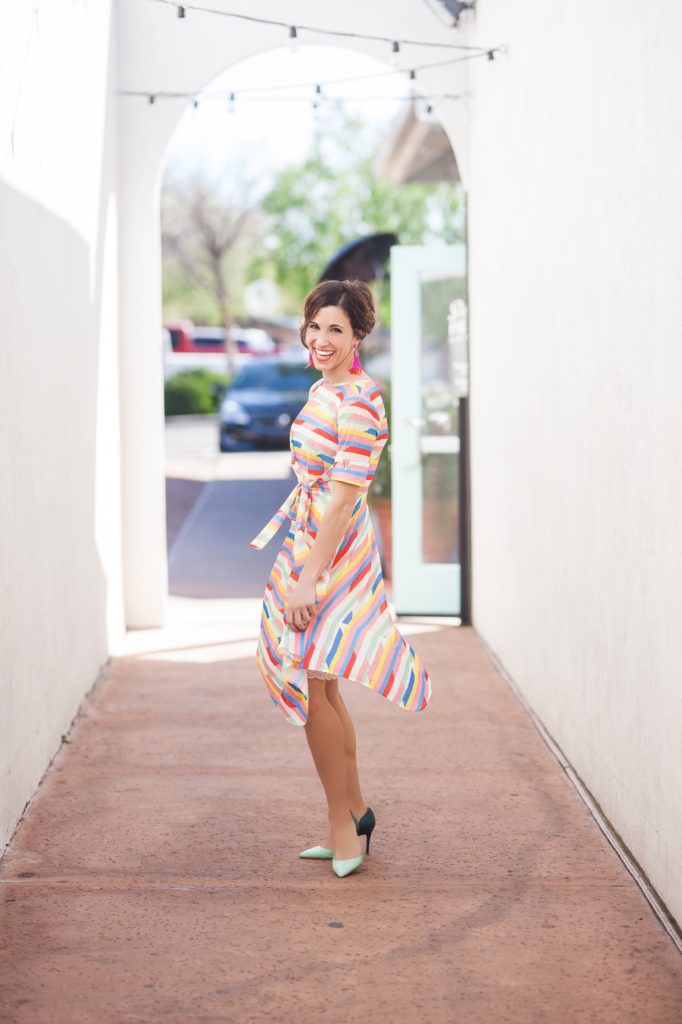
But finding the perfect fit isn’t impossible. In fact there are a few simple tips to guide you towards perfect fits for every item in your closet. To help you find the right size, I put together an expert’s guide to evaluating the secrets of a perfect fit.
 (This guide showcases three different sizes, each one dress size apart.)
(This guide showcases three different sizes, each one dress size apart.)
HORIZONTAL
When it comes to horizontal dimensions, you should check each of the following spots before allowing an item of clothing into your wardrobe:
Shoulders: the top or seam of your sleeve should line up with the bony tops of your shoulders rather than drooping down the arm or sneaking towards the neck.
Bust: Look out for gaping between the buttons. If it fits everywhere else it is possible to add hook and eye closures or move buttons. With back zips be sure that there isn’t any pulling or puckering. You want the fabric to drape not pull. Also be sure you can move comfortably, if you can’t steer your car or give a hug, it’s too tight.
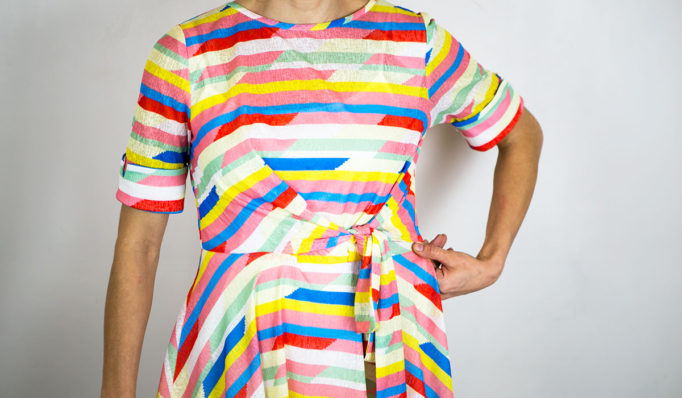
Waist: You should have about two fingers of wiggle room between your skin and the fabric. Bloating, a big meal, you aren’t the same size every day or even different times of the day—it’s important that your waistline won’t suddenly become too tight. This is as true for pants, as it is for waist-fitted dresses.
Hips: You may need to move around a little to properly evaluate this one. Sit down, stand up, bend over: our hips do a lot of work to accommodate our daily movements and your clothing should follow suit. Use a full length mirror to check for pulling across the front and back. If there’s a front zipper, you should never see a pull or strain. If you have billowing or fabric that doesn’t lie flat around the hips or thighs, you need to go down a size. Finally, if you can see bunching around front pant pockets, consider having them removed.
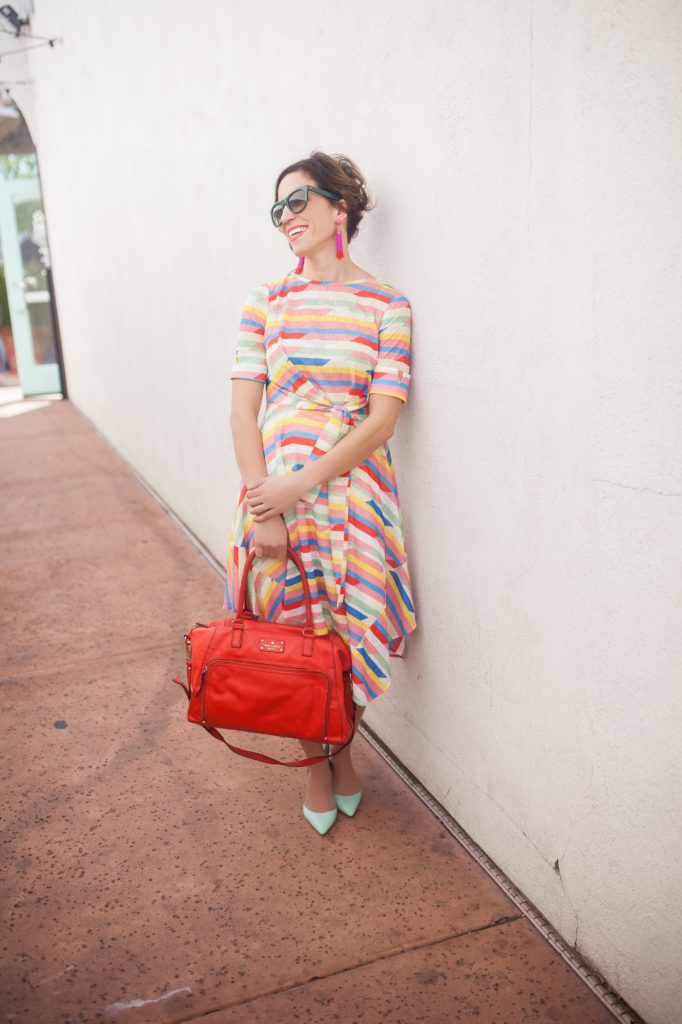
VERTICAL
Besides having a pair of pants hemmed, most people ignore this critical component of a perfect fit.
Arms: Your shirt cuffs should reach just below your wrist. Any shorter and you’ll look awkward and oversized. Any longer and you’ll look sloppy and lost. You can fudge it a bit by rolling up the sleeves, but chances are, if it doesn’t fit in the arms, it doesn’t fit somewhere else as well.
Torso: If an empire waist sits too high on your bust, it can’t be adjusted. Either go up a size or find a taller length. A fitted waist should also line up with your natural waist. To find yours, bend side to side while sliding your hands from under your rib cage towards your hips. Your hands should naturally settle in your natural waist.
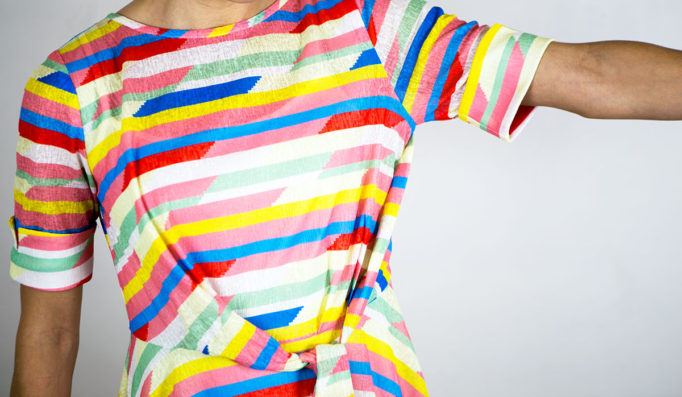
Legs:
(Short) Removing an inch or two from your inseam isn’t a real concern. However, if you are removing more fabric than that, you may not be solving the problem. If you’re wearing a skinny pant, you may remove the taper completely, leaving you with a calf sized pant-width around your ankles. The reverse goes for flares and bootcuts, the shape should begin to widen (or break) at the knee. Remove too much off the hem and your break may start around your shins, creating a squat, disproportionate leg line. If you are 5 ft 3 in or under, consider a petite fit, and remember to size up when you do.
(Long) Occasionally you’ll have enough extra fabric in the seam to drop the hem, but if you are 5 ft 7 in or above, consider finding a tall fit. It’s going to fit you better all over including the crotch. I recommend Long Tall Sally and Search By Inseam. If you want something custom built to your unique dimensions, I recommend trying Eshakti.
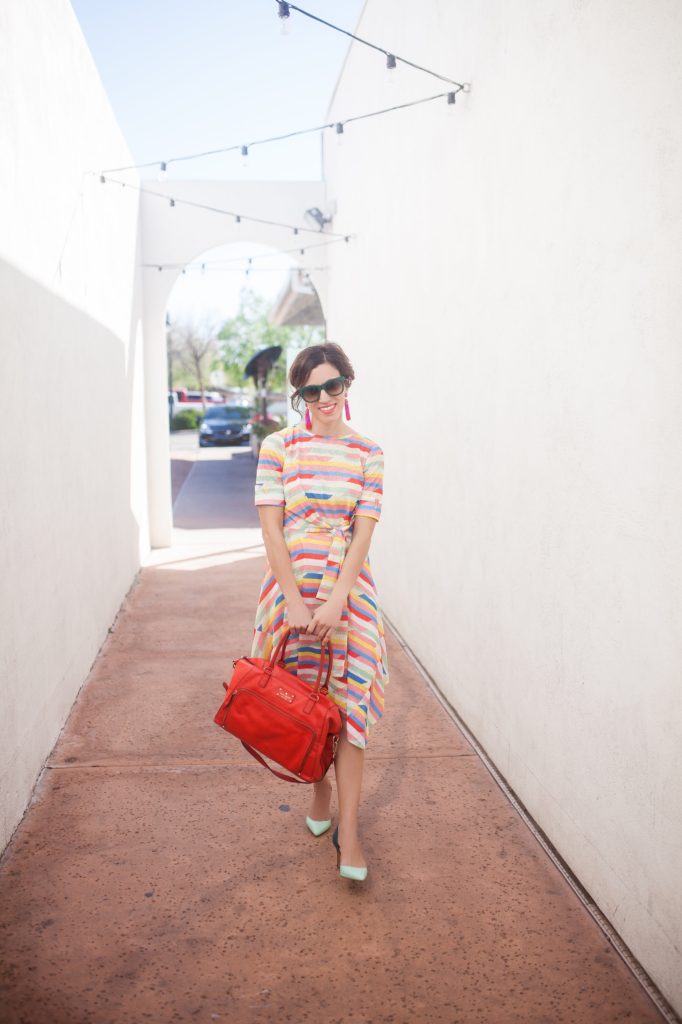
Hope that helps, and let me know what your most difficult areas are to fit. I’m happy to answer questions in the comments or put together future posts on your requests.

















